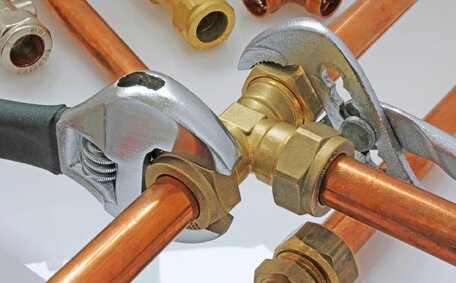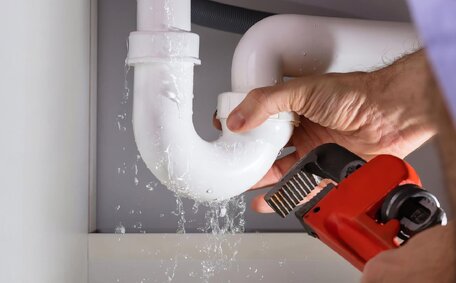Introduction to Insulation for Hot Water Systems
Excessive hot water system costs can often be mitigated by insulation, which enhances efficiency and curbs energy losses.
In this article, we’ll overview the benefits of insulation for hot water heaters and pipes. Discover how insulating heaters and pipes minimises heat loss, leading to significant savings on energy costs. We’ll also discuss the different types of insulation materials, with tips on how to choose the right option for your needs.
We’ll provide actionable guidance on installing insulation on hot water systems yourself or knowing what to ask professional plumbers. And we’ll share extra handy tips for further reducing your energy usage while complementing insulation efforts.
With the right insulation approach, you’ll achieve peace of mind, assured that your system won’t squander heat and run up expenses. Let’s dive into how to maintain efficiency through properly insulating your hot water system.
Understanding Heat Loss in Hot Water Systems
A key source of energy waste in hot water systems is heat loss. Heat loss occurs as the heated water in your system transfers thermal energy to its colder surroundings.
Without insulation, a hot water system can lose up to 75% of its heat. For example, Raising the temperature from 20°C to 60°C in 10 metres of uninsulated copper pipes uses as much energy as a 1kW electric heater running for 6 hours.
External water heaters without insulation are especially susceptible to heat loss. Additionally, extended pipes to areas like outdoor showers are particularly energy-intensive.
This leakage of precious thermal energy requires your hot water system to work harder re-heating water. That equates to higher energy bills and greater emissions from fossil fuel systems. Countering heat loss with insulation is essential for the efficiency of hot water systems.
Types of Insulation for Water Heaters and Pipes
When it comes to insulating hot water systems, you have several effective options to choose from. Choosing appropriate insulation depends on your heater type, pipe material, and system configuration. Here are the most common types of insulation materials used for hot water units and plumbing:
Water Heater Insulation
Reflective Insulation: Reflective wraps made of layered aluminium foil repel heat back towards the heater, enhancing retention. This traps warmth effectively and is a lightweight, affordable option suitable for the St Ives climate.
Bulk Insulation: Fibreglass, mineral wool and polyester insulation batts completely wrap tanks with a thick layer that resists heat flow. However, if not installed correctly, their bulkiness can trap moisture.
Pipe Insulation
Tubular Foam: Pre-slit foam tubes fit snuggly over pipes, bonded with adhesive tape. The smooth surface allows neat finishing. Foam insulation works for hot and cold pipes both indoors and outdoors.
Wrap Tape: Self-sealing, flexible wrap tape insulation suits pipes in tight spaces like wall cavities. But install carefully to ensure complete coverage and an airtight seal.
Spray Foam: Liquid spray foam injected around pipes adheres completely to surfaces, sealing air pockets. Professional installation ensures proper curing and expansion rates suiting pipe types and Australian standards.
Selecting suitable insulation requires considering the dimensions, layouts, and materials of your current system. Plumbing experts offer customised recommendations for insulation solutions tailored to your specific setup.
Benefits of Insulating Hot Water Systems
Insulating your hot water system and pipes offers multiple advantages, such as:
Enhanced Energy Efficiency
Insulating hot water heaters and distribution pipes substantially reduces wasted heat loss. Correctly installed insulation can cut heat loss by as much as 95% versus systems without insulation. This helps your system retain thermal energy better and reheats water more efficiently, rather than losing heat.
Insulating an electric tank unit from 20°C ambient temperature to 60°C hot water requires around 30% less energy than heating the same volume in an uninsulated system. This efficiency boost translates into reduced energy consumption and lower bills.
Cost Savings Over Time
Improved energy efficiency from insulation results in lower operational costs. Australian households can save over $200 annually just by insulating their existing electric or gas storage tanks. And optimising larger commercial or heat pump systems saves even more on costly fuels like gas and electricity.
Insulation also extends the working life of water heaters by reducing detrimental temperature fluctuations and corrosion. Saving on replacement costs down the track adds up for extra financial benefits.
Reduced Carbon Footprint
Greater energy efficiency means your insulated hot water system uses less power from the grid or consumes less gas. So insulating established heaters and pipes avoids unnecessary greenhouse emissions associated with conventional water heating fuels.
In total, direct water heater emissions contribute around 542,000 tonnes of CO2 every year nationwide. Careful insulation with quality materials can contribute to lowering Australia’s overall carbon emissions.
Installing Insulation on Hot Water Pipes
Insulating your property’s hot water pipes maintains temperature and is an effective strategy to conserve energy and reduce expenses. However, the DIY approach requires awareness of certain technical details. Follow these key steps for properly insulating exposed hot water pipes:
1. Check Pipe Types and Layout
Locate all sections requiring insulation and assess their accessibility, whether in wall cavities, under floors, or across rafters. Note pipe routes, connectors and materials (copper, PEX, PVC) as insulation choices vary.
2. Gather Right Materials
For convenience, select versatile tubular foam or adaptable wrap tape suited to your pipe types. The installation process varies for straight segments versus bends, and for main lines versus narrow connectors. Purchase sufficient quantities with extras.
3. Clean and Dry Pipes
Wipe dirt and moisture from pipes so insulation adheres properly. Allow surfaces to fully dry. Dust remnants can reduce insulation contact and efficiency.
4. Size and Cut Tubing
Measure pipe circumferences and cut tubing to suit. Lengthwise slits allow opening and wrapping around contours. Ensure insulation fits tightly to eliminate air pockets and gaps.
5. Affix Insulation
Seal lengthwise slits and carefully secure ends without air gaps. Adhesive, sealing tape or clamps like zip ties firmly fasten insulation. Ensure insulation withstands climate exposure if located outdoors.
For complex, multi-storey or hard-to-reach pipes, consider professional insulation service rather than DIY wrapping. Our skilled plumbers can outfit your entire system with insulation - contact us for a complimentary quote.
Complementary Energy Saving Tips
Alongside insulating your hot water system, adopting some simple habits and upgrades can further optimise efficiency:
Lower the Thermostat
Set your water heater thermostat to a moderate 50-60°C for optimal balance between utility and energy savings.
This sufficiently meets hot water needs while reducing wasted standby heat loss.
Install Heat Traps
Fitting heat trap valves onto your hot water pipes prevents convection currents stealing heat. Our plumbing experts can install and customize heat trap valves for your system during insulation fitting.
Insulate More
Increase insulation to include associated components such as cold water mains and delivery lines. Optimising the entire system prevents flanking heat losses.
Maintain Efficiency
Keep your hot water system well-maintained through regular professional servicing and descaling. Regular maintenance promotes both efficient energy use and prolonged system life.
Contact us via email or phone at 1300 349 338 for advice tailored to boost your water system’s efficiency.






